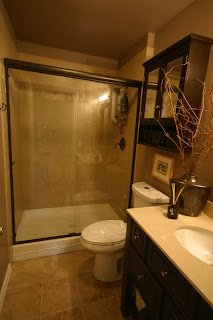Author: Mila

Japan, as a country that combines tradition and modernity, is famous not only for its advanced technology and natural beauty, but also for its unique and interesting work culture. The culture of kerja di Jepang reflects historical heritage and deep values that continue to evolve with the changing times.
Interestingly, the work culture in Japan has various advantages that make it unique and play a major role in increasing productivity and business success in the country. Let’s discuss some of the main advantages of the work culture in Japan!
High Discipline and Punctuality
One of the most prominent aspects of … Read More...

The journey of home addition remodeling and renovation is an intricate dance between the old and the new, a blend of preserving the essence while introducing innovation. The allure lies in expanding living space without sacrificing the original architectural integrity that imbues a building with character. This endeavor requires a nuanced approach, balancing aesthetics, functionality, and structural harmony to create spaces that are both beautiful and livable.
Understanding the Original Architecture
The foundation of a seamless addition lies in a deep understanding of the existing home’s architectural style. This process involves identifying the key elements that define the home’s character. … Read More...
Download MS Office 2013 Activator for Full Feature Activation
If you want to unlock all the features of Microsoft Office 2013, using an MS Office 2013 activator download is a popular choice. This tool helps users activate their software fully, allowing access to all the programs like Word, Excel, and PowerPoint without any restrictions. Many people look for a reliable activator to avoid limitations that come with trial versions or unlicensed copies.
When you download an MS Office 2013 activator, it usually works by bypassing the official activation process, making your copy appear … Read More...

The first thing you must check is the condition of the container. You’ll want to make sure the container is in good overall condition, with no visible damage or holes. Some companies offer used shipping containers for sale after an extensive review and repair protocol. Another important factor to consider is the size and dimensions of the container. If you buy a large shipping container and do not use all the space, the transportation cost will be higher than you expected. If it is too small, you will end up with untransported goods. Companies like Eveon containers offer a wide … Read More...

A splendid tree is commonly or not, the central focus in a garden. On the larger level, it is often best to contrast textures using the weather of your panorama that aren’t plants. Crops have a particular affect on the look of the garden. Don’t put elements from one zone into another zone – that is the fundamental tip to kind a logical backyard structure.
5. A vital key to an amazing garden landscape design is to create a focal point. Drought-resistant plants thrive in a Zen backyard’s sandy areas and are good for low-rainfall zones. Walled gardens, pergolas, terraces … Read More...

Kitchen and loo remodeling suggestions abound. This is again why it’s a good idea to not bounce in and start making an attempt to put your property remodeling plans into follow. A variety of widespread kitchen remodeling trends from latest years name back to older adorning eras. When dealing with the challenge of remodeling a small lavatory you could know the top outcome earlier than you can start your small lavatory remodeling plan.
Remodeling software program additionally calculates the fabric and labor cost, after updating the fabric costs and the present labor costs. Remodeling, when finished properly, is a successful … Read More...

Earlier than starting any bathroom remodeling, it is best to create a price range. When in search of the right basement remodeling plans just go to your local retailer and see what they could have the provide within the perfect plans for your venture. After hiring a contractor you will want to keep as lively in the remodeling course of as you can.
If you are fortunate sufficient to reside in or near a larger metropolis you’ll be able to go to some very good plumbing show rooms to see displays and search recommendation from skilled designers on methods to … Read More...

In terms of residence reworking plans most individuals will have big ideas of what they are going to do, add a room, convert another, and knock by a few rooms. It is simply that finding the paint and coloration scheme to go on the walls of a room occurs to be a lot more entertaining to individuals than anything else. Most homeowners don’t need to spend the cash on a contractor however there are some options you’ll be able to add to increase your property worth.
Some householders might favor to have one grasp binder with individual folders for each … Read More...
